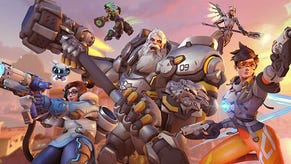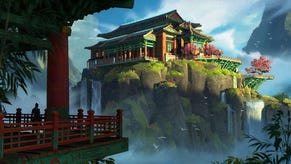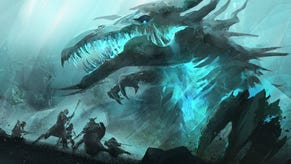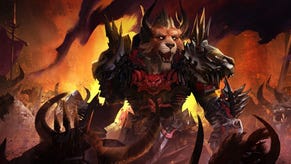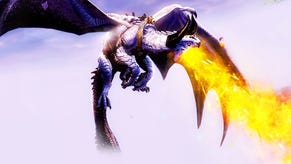Guild Wars 2
Wow factor.
A level curve
Balancing the democratic events system is each player's "personal story", essentially a single-player RPG for their character – though some of it will take place in the persistent world, and it will be possible to invite friends to share it.
This, like the rest of the game, is fully voiced, though it's much less prone to lengthy talking-head chat than The Old Republic. Decisions you make about your character's background and personality during the character creation process will affect the story, your conversational options, and how others react to you. "We really want it to be a great RPG as well as an MMO," Flannum says.
ArenaNet intends for the narrative flow of your personal story and spontaneous exploration of the world to drive your progress in Guild Wars 2, rather than a drive to increase the number after your character's name. "Levelling is not the goal in the game," says Flannum, "but a thing that is good at helping you mark progress." "We want this to be a game where you don't ever have to grind to get through levels," adds Johanson.
It's not that levelling is sidelined, but its importance has been deflated. Hence the flattening of the levelling curve after level 10, the skill deck system that prevents ballooning over-complication of the classes, a sidekicking system that will allow you to boost any friend to your level and a philosophy that "the endgame should not be different from the game you played to get to it," according to Flannum.
Of course there will be dungeons and PVP to run, but events, world exploration and your personal story will continue to be important at maximum level. Guild Wars' famously competitive arena player-versus-player matches will be joined by epic "world-versus-world" battles in which three servers will fight each other on a persistent map over a whole week.
The last, but very far from least weapon in Guild Wars 2's considerable arsenal is its stunning good looks. The art team led by Daniel Dociu has created a distinctive and sumptuously detailed fantasy world with sharp steampunk influences, sometimes colourful and homely, sometimes startling and otherworldly. Their aim is to give the whole game a "hand-crafted quality" and ensure that "any screenshot should feel like living concept art," Dociu says, and they're succeeding.
I'm shown an unbelievably intricate nautical town that is more Philip Pullman than Tolkien. It's all airships and bronzed statues and ramshackle walkways, and makes far more use of multiple vertical levels than most MMOs. Meanwhile, the Charr starting area blends an armour-plated industrial revolution with dreamy autumnal forests. A capable and well-optimised engine will render all this on surprisingly humble graphics cards, we're told.
Dociu says simply that he wants his game to be the most beautiful out there. While the ArenaNet team don't come across as arrogant, they're certainly not shy of setting themselves the loftiest goals.
"People... want an experience that matches up with a game that has four expansions already made for it," says Johanson. "We're not sacrificing anything. PVP... an open world full of events, your personal story chain, and all the different, branching versions that all the different races offer... repeatable versions of dungeons that have different storylines that branch that you can play through. We're tackling all of that. If that takes a while, then it's totally worth it."
Can ArenaNet really deliver a mature MMO from day one, made to a higher standard than the market leader and not missing a single component? It's hard not to be sceptical, but it's also hard not to be impressed by the team's ambition and execution. Guild Wars 2 is already polished, innovative and fun to play.
The beauty of it is, for all the bullish talk, Guild Wars 2 doesn't have to compete. As with the first Guild Wars, no monthly subscription will be required and the game will be supported through the sale of customisations and services as well as expansion or content packs in some yet-to-be-finalised form. (O'Brien is a staunch advocate of micro-transactions, feeling that they "align the interests of players and developers" and "the only reason debates happen is that there are some games that really screw their players.")
Since it's not fighting for your $15 a month, Guild Wars 2 can happily co-exist with World of Warcraft. The question, really, is whether World of Warcraft, in all its undeniable but ageing glory, can co-exist with Guild Wars 2.

